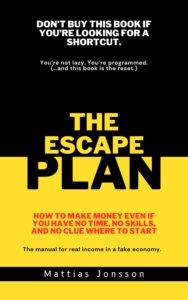Back in 2018 I rolled a shiny carry-on through Ho Chi Minh City convinced I’d hacked adulthood.
Friends were stuck in cubicles; I was en route to mango-smoothie mornings armed with every “essential” nomad hack the internet could cough up.
Weeks later those hacks were hacking me. Overstuffed gear, pricey memberships, frantic city-hopping—each promised freedom but piled on stress and costs.
Save your back (and budget). Here are six things I thought would make life on the road easier—until they did the exact opposite.
1. Chasing the perfect coworking space
Back when I quit corporate, I assumed a coworking membership was the golden ticket: fast Wi-Fi, free coffee, an instant community.
What I didn’t factor in was the daily commute across town in tropical heat, the open-plan buzz that made deep work impossible, and the nagging feeling that I had to “get my money’s worth” by showing up even when I worked better from my Airbnb kitchen table.
Research backs up the mixed bag. A Harvard Business Review article found that while coworking can boost social satisfaction, it can also increase distractions and time costs when workers have to travel to a separate location.
Lesson learned: pick accommodation with decent Wi-Fi first, use day-passes sparingly, and remember that “community” can also be the café owner who knows your regular order.
2. Lugging around a mini electronics store
My first nomad backpack looked like I’d raided a tech expo: DSLR with three lenses, ring light, backup laptop, noise-canceling cans the size of salad bowls—you name it.
The bag tipped 16 kg, and my shoulders staged a protest somewhere between Da Nang and Bali. The American Chiropractic Association recommends keeping pack weight under 10 percent of body weight to avoid strain; anything more courts chronic pain and posture issues (ACA guidance).
These days I travel with a mirrorless camera, one versatile lens, and a lightweight foldable keyboard. Not only is airport security quicker, but replacing gear on the road (when something breaks or gets stolen) is far less traumatic.
3. Country-hopping every few weeks
A cheap flight alert used to trigger an instant booking. Japan for cherry blossoms? Sure. Bangkok right after? Why not. Within months I was collecting passport stamps like Pokémon cards—and feeling perpetually jet-lagged.
According to the CDC, rapid time-zone changes disrupt mood, concentration, and physical performance—pretty much everything a freelancer relies on.
Even when I adjusted my sleep ahead of flights, constant resets chewed through creative energy and left me living in “airport mode,” never fully present.
Staying a minimum of six weeks per location now feels like swapping the hamster wheel for a hammock: deeper friendships, lower rent, and an actual sense of home.
4. Trusting public wi-fi for everything
Early on I’d stroll into any café, hammer out invoices, and sync client files over latte-powered public networks. It felt gloriously free—until a client spotted fraudulent charges on the corporate card I’d just used.
Turns out open hotspots are a hacker’s playground. Norton’s guide to public Wi-Fi risks lists unencrypted traffic, malware injection, and man-in-the-middle attacks among the greatest hits.
Now I travel with an unlocked phone, a local SIM that doubles as a hotspot, and a trusted VPN for those rare moments when café Wi-Fi is unavoidable. The combined monthly cost is less than one identity-theft headache.
5. Working on my clients’ clocks
I once believed the ultimate gesture of professionalism was aligning my schedule to my U.S. clients—no matter where I was. Cue 2 a.m. strategy calls in Hanoi and lunchtime “naps” that wrecked my social life.
The Sleep Foundation notes that shift-work sleep disorder can increase cardiovascular and metabolic problems while tanking mood and focus.
These days, I negotiate “async-first” contracts up front. I record walkthrough videos, batch replies, and reserve one overlap window a week for live calls. Counter-intuitively, the work quality went up once I stopped acting like a human time-zone pretzel.
6. Treating social media as a real community
Scrolling #digitalnomad on Instagram made it look easy: rooftop pools, motivational captions, and beach laptops. I figured posting daily would plug me into that tribe.
What I got instead was FOMO, doom-scroll detours, and surface-level connections that evaporated when the algorithm shifted.
The 2023 Buffer State of Remote Work found that loneliness and “staying home too often” rank as top struggles for remote workers—despite endless online chatter.
Face-to-face still matters. These days I prioritize language classes, running clubs, or volunteering gigs wherever I land. One hour offline with locals beats 100 story replies from strangers.
(I’ve mentioned this before but ditching the “online equals community” myth was the single biggest upgrade to my mental health on the road.)
The bottom line
Digital nomad life already comes with enough variables—visas, Wi-Fi, the eternal hunt for good coffee. Loading extra “convenience” hacks on top can backfire fast.
When I peeled away overpriced memberships, excess gear, frantic travel, sketchy networks, off-hour schedules, and social-media mirages, the lifestyle finally felt lighter—literally and mentally.
If you’re plotting your own remote journey, start by asking, Does this make my day simpler—or just busier? The answer might save you a sore back, a hacked account, and a few thousand air miles you never needed to fly.

